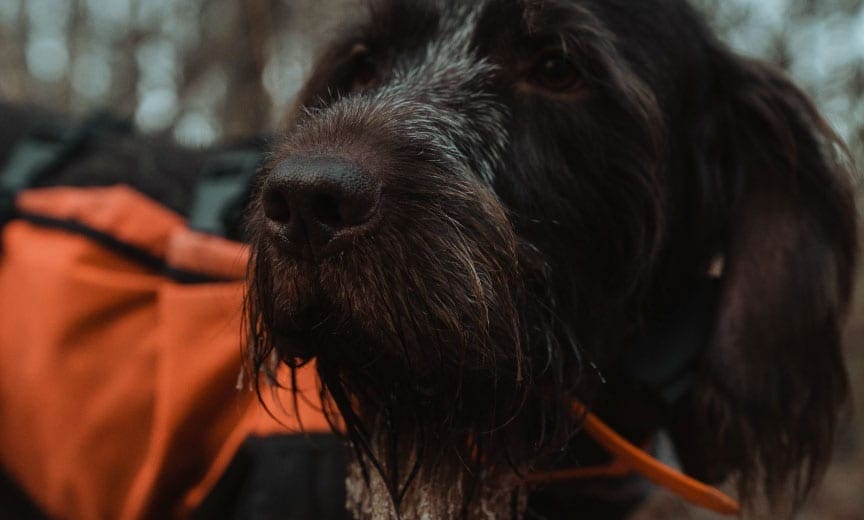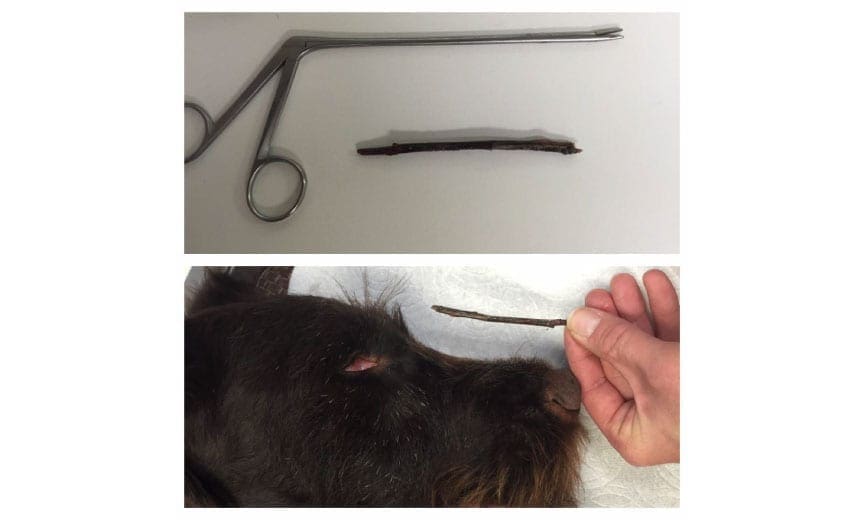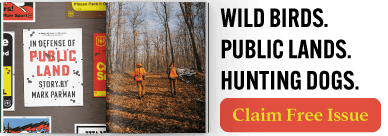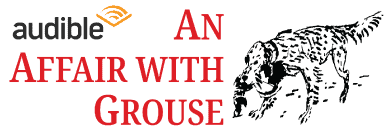Home » Hunting Dogs » Nasal Discharge in Dogs – Identifying Nose Trauma with Hunting Dogs
Nasal Discharge in Dogs – Identifying Nose Trauma with Hunting Dogs

"Dr. Joe Spoo is a graduate of the Iowa State…
Dr. Joe Spoo explores minor to major nose issues that can occur in the field with hunting dogs
If you run hard-charging dogs long enough you are guaranteed to encounter issues with their nose. These can range from minor irritation to a severe trauma related to something jammed up the nose. Understanding how to recognize these various concerns, and more importantly how to address them, is a vitally important component to keeping your pup in the field the entire hunting season.
If you think about the heavy cover we ask these dogs to run through, the numerous obstacles and the fact they are leading with their noses, it’s shocking that we don’t see more traumatic injuries. However, when they do occur, it’s important to be able to recognize when there’s a problem, the degree of the problem and whether it’s something you can address yourself or if it’s something that needs the attention of your veterinarian.
Years ago, on a South Dakota pheasant opener, we were hunting a little brushy draw through the middle of a cornfield when my English Setter. Maggie, started sneezing violently. I caught up to her and the blood was pouring out of her right nostril. I carried her back to the truck and her day was over. I sedated her to look with a scope but the amount of bleeding and trauma didn’t allow me to see much. I placed her on antibiotics and hoped for the best.
Over the month-long course of medications, she still had a small amount of discharge and my plan was to take her to the university for a CT at the end of the antibiotics as these were in the days before we had those capabilities in-house. Other than the discharge and occasional raspy, nasally breathing she continued to seem normal and so I continued to hunt her and she performed like a rockstar. We were wrapping up a three-day trip and I planned on her hunting one last spot. I opened the crate to get her out and she again started to sneeze violently. Out on the tailgate came an approximately four-inch long blood covered stick. I was shocked and amazed that this little dog had hunted for nearly a month with this thing jammed up her nose. To make it more impressive, shortly after sneezing it out she nailed a covey of sharptails in a stiff 25 mph wind.
Nearly two decades later I’m now more aggressive when a gun dog presents with her symptoms and make sure we find the offending stick, grass awn or weed as soon as possible. Unfortunately, these foreign body issues will require a trip to the vet clinic as these dogs need to be under heavy sedation and many times fully under anesthesia as the tissues of the nose are very sensitive. The good news is that removing them usually doesn’t require some fancy fiber optic scope or a rigid videoscope. The vast majority of these can be removed through an otoscope (the scope used to examine your dog’s ears) and with an alligator forceps. In rare occasions, some dogs will require more aggressive diagnostics, like a CT, and a flexible scope to get further into the nasal passages.

Common nose irritants that can be solved with saline
The more common issue that we see with our hunting dogs are dogs that have irritation brought on by the conditions in the field. The two most common offenders are dust and pollen. In dry years out West dust, especially around fencelines and roads, can wreak havoc on a dog’s nose and ability to scent game. In luscious green years, we can see a similar problem with pollens in the early season. The good news is that both problems can be addressed in the field. Every fall I stock the truck with several bottles of saline eye flush to be used to flush out the eyes, nose and wounds. The key here is that you want saline and not contact solution. Not many years ago the contact aisle was all saline with a few bottles of solution; now it is all solution and you must hunt for the straight saline.
The process of flushing is pretty simple. You gently take the dog by the muzzle and tip its head back and then allow the saline to run into the nostrils, one at a time. You will not want to forcibly squirt the saline in as this will be irritating but rather allow it to gently run into the nose. If your pup looks at you like they are asking “why are you drowning me” and they begin to swallow, you know you are doing it correctly. Basically, you are mimicking what is accomplished with a neti pot, but instead of having it run out the other nostril you are having it run to the back of the dog’s throat. It doesn’t take much to flush the nasal passages; after a couple of swallows I usually switch to the other nostril. I find that this is something, on the days that you do it, that you are only doing once a day unless you are in horribly dusty conditions.

Identifying foreign body issues in a hunting dog’s nose
The major issue is differentiating if your dog has a foreign body that needs to be addressed or an irritation. For a foreign body the dog will usually have consistent, and often times violent, sneezing episodes. They will usually pull their nose to one side looking like they are irritated or about to sneeze and the hallmark is discharge that is different from one nostril to the other. In severe cases, there will be a thick, green, nasty looking discharge from the nostril. In the more typical case it will just be an increase in the normal clear-looking discharge. Sometimes these changes can be subtle; if there is a question, error on the side of a veterinary exam, and if one nostril is obviously different from the other then definitely seek veterinary attention.
So much of our upland experience is guided by our canine companion’s nose. It’s imperative to understand the problems that occur and how to address them to keep your partner happy and healthy all season long.
"Dr. Joe Spoo is a graduate of the Iowa State University College of Veterinary Medicine. After graduation he practiced in the grouse woods of northern Minnesota before relocating to the prairies of South Dakota where he has spent the last 16 years chasing birds with dogs. Spoo’s passion is the canine athlete and he believes in a cradle-to-grave approach to managing the canine athlete.Dr. Spoo is a Diplomate of the American College of Sports Medicine and Rehabilitation and the only such specialist who has committed his career to hunting dog health and expanding our field of knowledge of these amazing athletes. In addition to his practice responsibilities, he has an active consulting business serving sporting dog owners and the sporting dog industry. He also manages a website (www.gundogdoc.com), a comprehensive resource for all things gundog related."




Great editorial.
For the life of me, I cannot find a saline flush online. Could you please provide a specific product name or two that I search for?